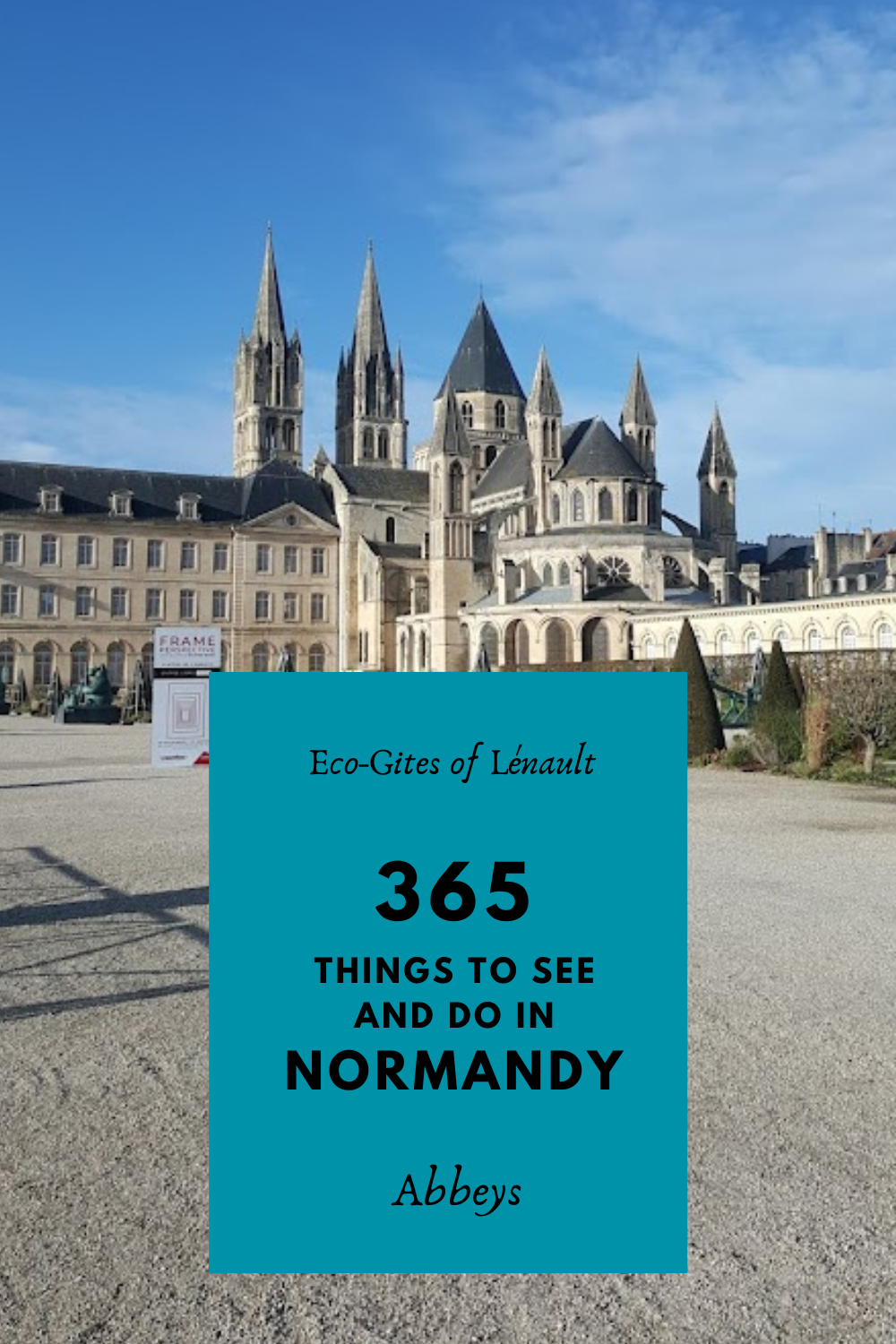365 - Normandy Abbeys
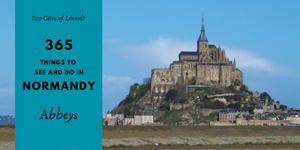
The first abbeys in Normandy were built in the 5th century and at their height there were around 120 across the region. Many were destroyed during the French Revolution but today, approximately half of these survive, some still home to monks and nuns, others ruins standing proudly across the centuries and some repurposed for other uses. In this blog post you will find details for 7 of the best Normandy abbeys plus a bonus priory right on our doorstep.
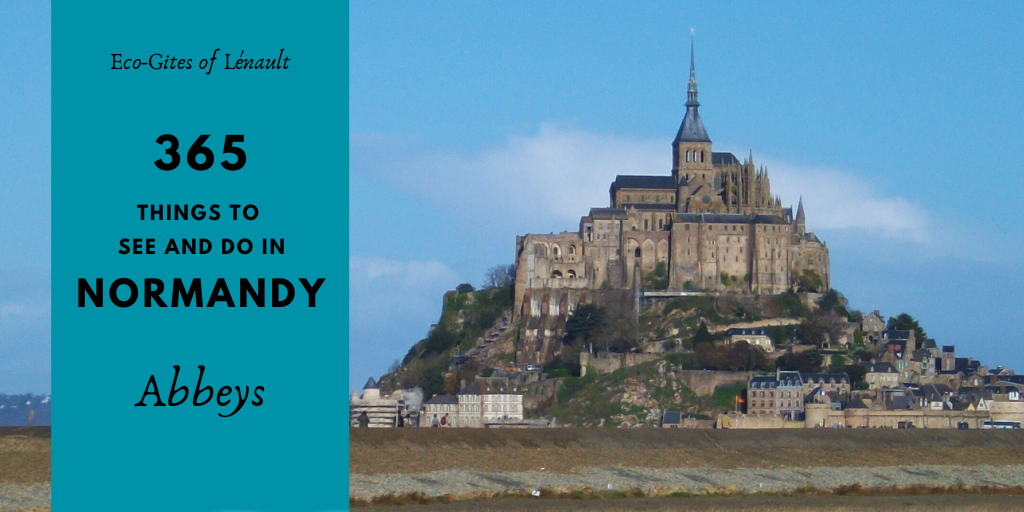
7 Normandy Abbeys
1. Mont Saint Michel
Mont Saint Michel is without doubt the most famous abbey in Normandy, perched on a rocky island outcrop in the Baie Saint Michel. The first religious building was built on the rock sometime after 708 when legend has it that the Archangel Michael appeared in a dream-vision to Saint Aubert, bishop of Avranches, and asked him to build a sanctuary in his name. However, it wasn't until 966 that a community of Benedictine monks settled there and built the first church.
5 facts you may not know about Mont Saint Michel
1. Recent works mean that now at high tide the mount once again becomes an island completely surrounded by water.
2. The Mount was used as a prison in the 1800s.
3. It's current population is approximately 30 including a small community of monks and nuns.
4. Inhabitants of Month Saint Michel are called Les Montois.
5. It is included in the Bayeux Tapestry in a scene which shows knights being pulled from the quicksand around the mount.
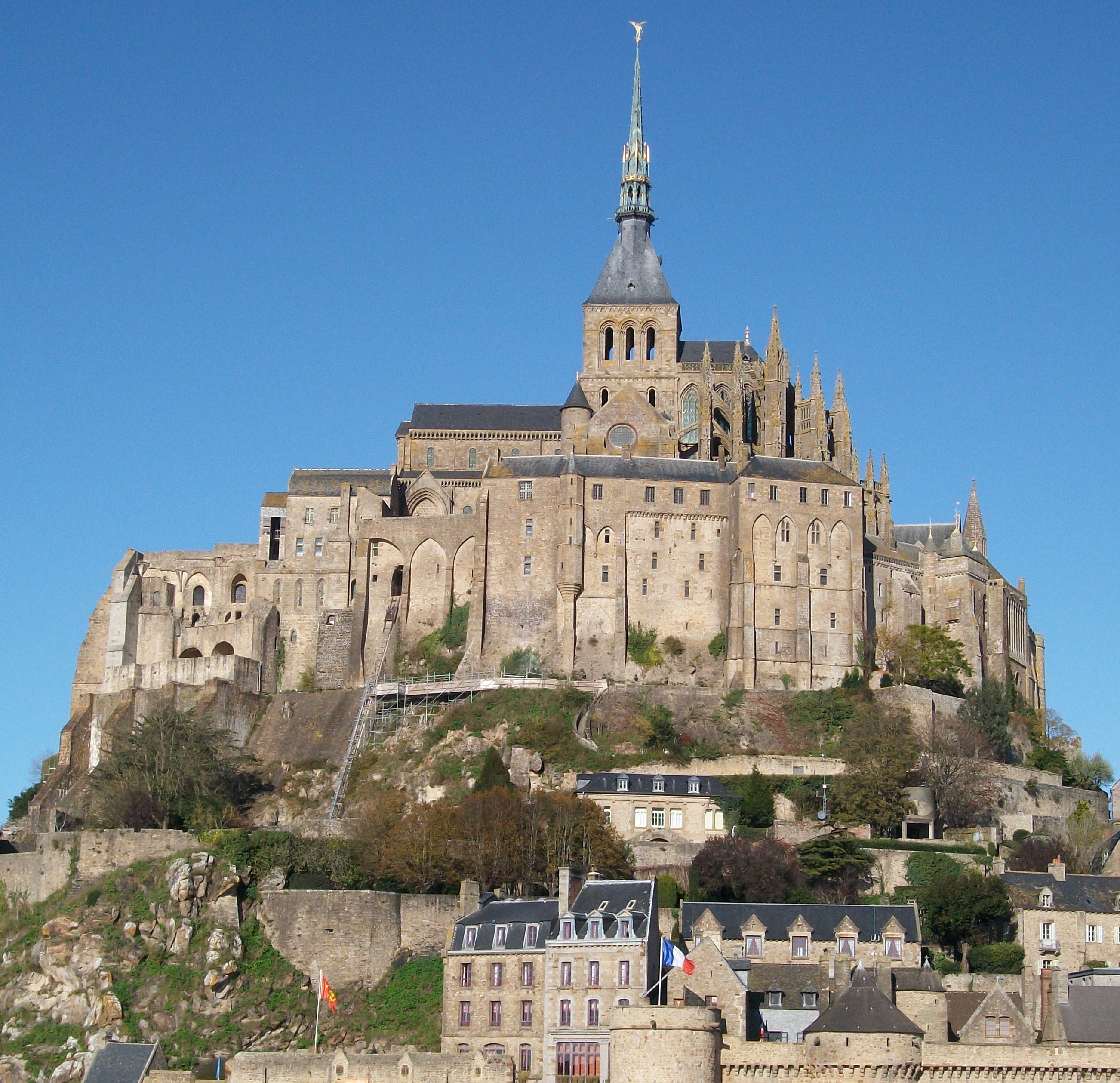
Mont Saint Michel
2. Abbaye-aux-Hommes, Caen
This former Benedictine monastery in the centre of Caen is also called the Abbaye de Saint Etienne (Saint Stephen in English). It was founded in 1063 by William the Conqueror and is his final resting ... well actually the final resting place of the only remaining part of him, namely one thigh bone.
During the French revolution, the Benedictine abbey became a parish church and from 1804 to 1961 the building was part of the Lycée Malherbe, a high school. During the battle to liberate Caen in 1944 the inhabitants of the city sort refuge in the church and it was used as a hospital. A sheet with a red cross made with blood was placed on the roof to indicate it was a hospital and to prevent the Allies bombing it. Adjacent to the Abbey is the Mairie (Town Hall) of Caen, built in the 18th century. It holds a permanent small exhibition about life in Caen during its liberation as well as other non-permanent exhibitions.
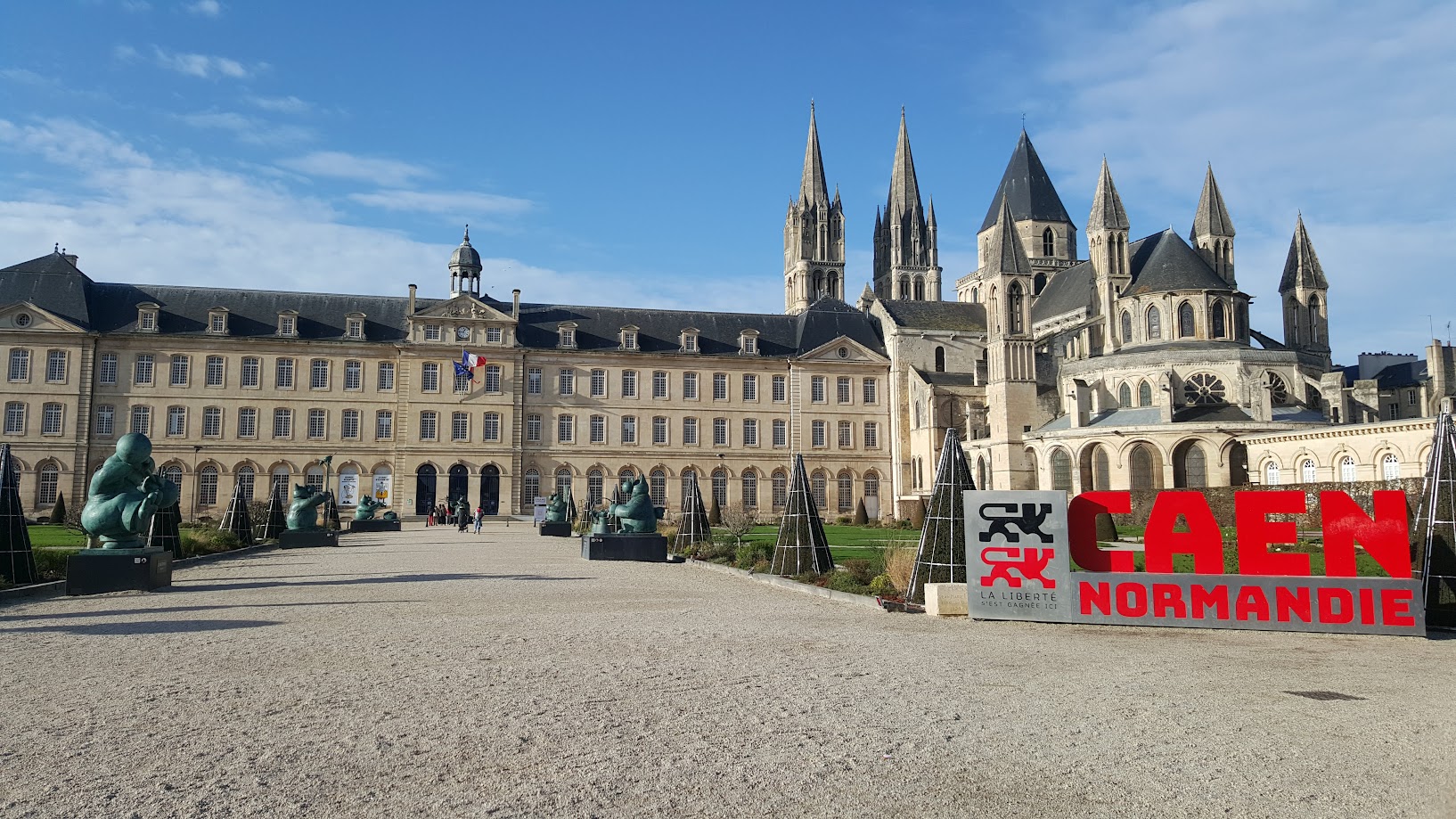
Abbaye aux Hommes and Caen town hall
3. Abbaye-aux-Dames, Caen
This abbey, also in Caen, was founded as a Benedictine nunnery by William the Conqueror and his wife Matilda. Work started in 1062 but wasn't finished until 1130. Matilda never saw it completed as she died in 1083 but she is buried in the choir under a slab of black marble. It is also known as the Abbaye de la Sainte-Trinité and includes the Holy Trinity church and the 18th century former convent buildings which are now home to the Normandy Regional Council. There are guided tours f the Abbey every day at 2.30pm and 4pm in French and English.
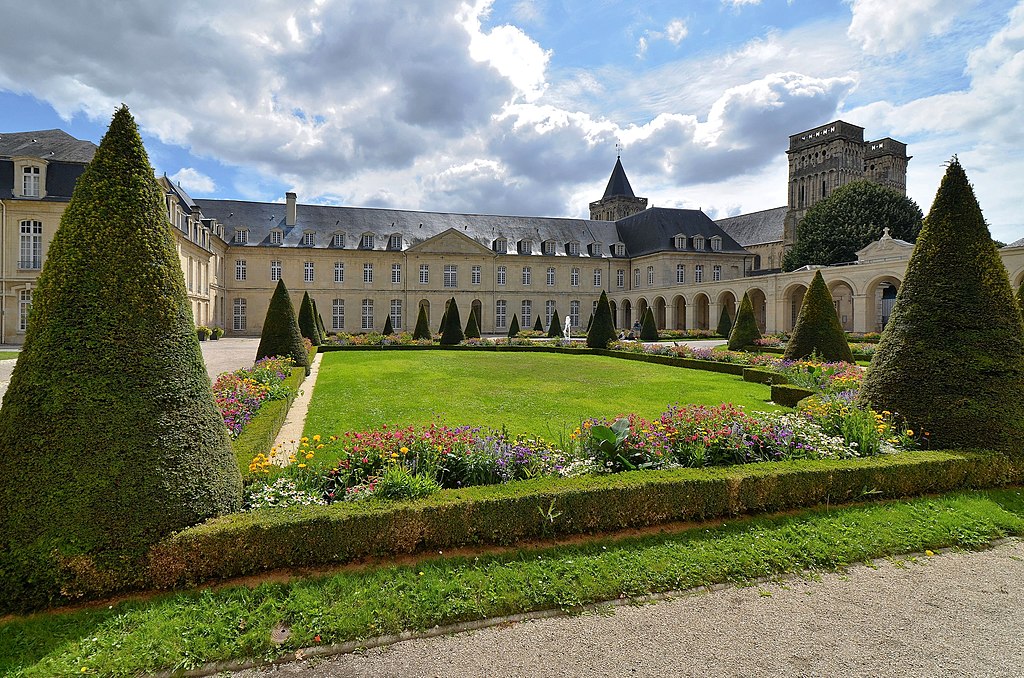
Abbaye aux Dames - Cour d'honneur
Image credit - Patrick from Compiègne, France, CC BY-SA 2.0 <https://creativecommons.org/licenses/by-sa/2.0>, via Wikimedia Commons
4. Abbaye Notre-Dame d'Ardenne
The Abbaye Notre-Dame d'Ardenne is a former Premonstratensian abbey just outside Caen, near Saint-Germain-la-Blanche-Herbe.
On June 7th/8th June 1944, the day after D-day, 18 Canadian soldiers were executed at the abbey by members of the 12th SS Panzer Division Hitlerjugend (Hitler Youth) in an event that has come to be known as the Ardenne Abbey massacre. Evidence showed they were shot in the back of the head making this a war crime.
The abbey was in ruins after the war but thanks to its designation as an historic monument it was completely renovated and in 1996 the Institut Mémoires de l’Edition Contemporaine was located there. The institute opened in 2004 with its library occupying the abbey church. The exterior of the Abbey is open from 2-6 pm (Tues - Fri) and the exhibitions inside from 2-6pm (Wed - Sun). Both are free of charge to visit.
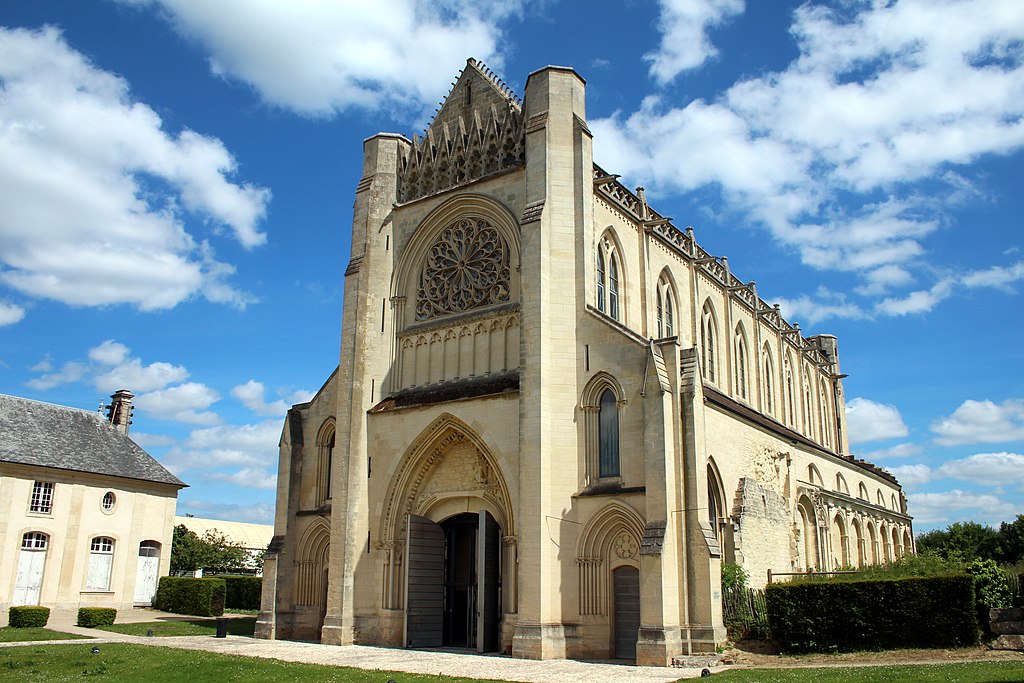
Abbaye Notre-Dame d'Ardenne
Pahcal123, CC BY-SA 4.0 <https://creativecommons.org/licenses/by-sa/4.0>, via Wikimedia Commons
5. Abbaye Hambye
Hambye Abbey in the village of Hambye, north of Villedieu-les-Poêles-Rouffigny was founded in 1145 and was home to Benedictine monks until the French Revolution. In the 19th century the abbey was partly dismantled but from 1964 works were undertaken to restore and stabilise the structure. The cloisters no longer exist but in their place are well maintained gardens. It is open to the public from April to October (please check the website for opening times) and on a weekend in December it holds a Christmas Market. The abbey shop is also open for this weekend. Throughout the summer it hosts exhibitions, workshops and concerts of medieval and sacred music through the summer months.
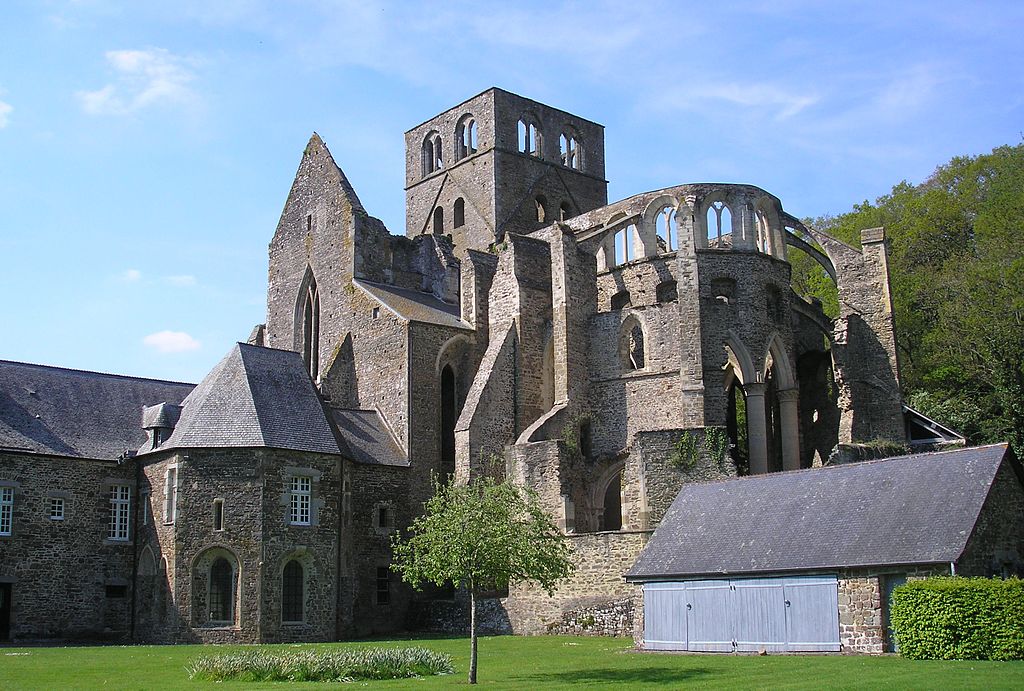
Abbaye Hambye
Image credit - Ikmo-ned, CC BY-SA 3.0 <https://creativecommons.org/licenses/by-sa/3.0>, via Wikimedia Commons
6. L’Abbaye bénédictine de Saint-Pierre-sur-Dives
This imposing abbey towering over the small town of Saint-Pierre-sur-Dives was originally built in the 11th century for a community of nuns by Countess Lesceline, the great-aunt of William the Conqueror. It was, however, entirely rebuilt between the 13th and 15th centuries although the tomb of the Countess survived the rebuild. Conventual buildings that were built in the 17th and 18th centuries have recently been renovated by the town and house the tourist information office, official buildings and a cinema. It remains one of the last intact abbeys in Normandy having escaped the bombardments of WWII.
The Abbey is open every day from 9.30an to 6pm and there is a service every Sunday at 11am (abbey closed for visitors at this time)
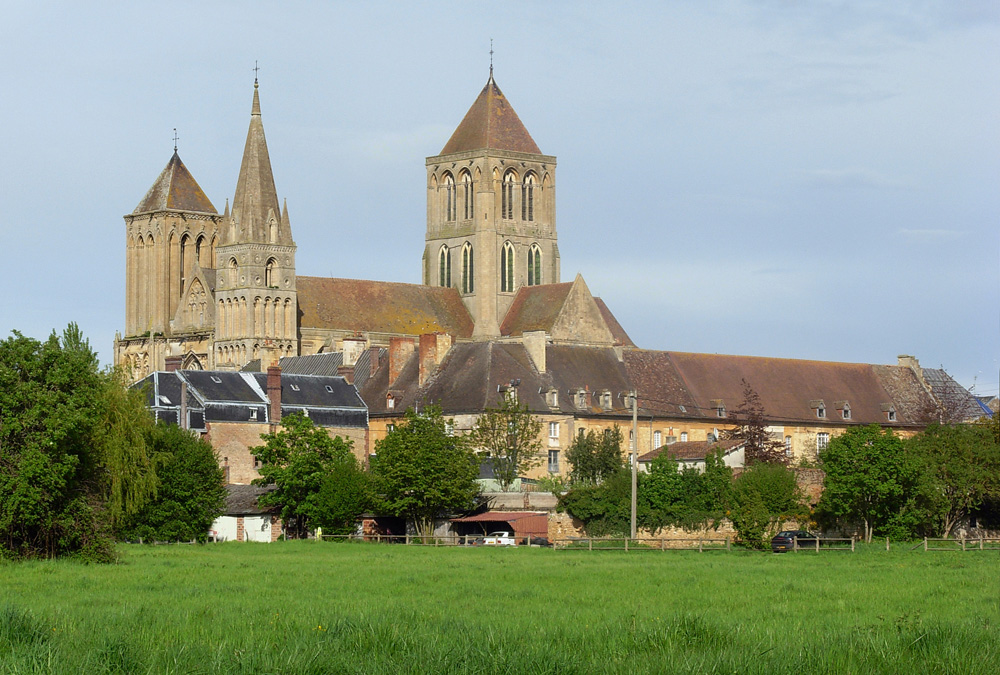
L’Abbaye bénédictine de Saint-Pierre-sur-Dives
Image credit - Laurent Hosansky Goéland, CC BY 3.0 <https://creativecommons.org/licenses/by/3.0>, via Wikimedia Commons
7. The Abbaye de Jumièges
In contrast to Saint-Pierre-sur-Dives, the Abbey at Jumièges on the River Seine west of Rouen, is far from intact and stands as a magnificent ruin, often cited as being one of France's most beautiful. It was one of Normandy's first abbeys, founded in 654 by Saint-Philibert but since that time it has been damaged many times including by the Vikings, during the Hundred Years' War and after the French Revolution when the stones were stripped for use elsewhere. However, today the remains of the cloister and conventual buildings are dominated by the 46m high twin towers that encircle the building's Romanesque façade. The abbey house hosts exhibitions and various events are held in the grounds. It is open all year except January 1st, May 1st, November 1st and 11th, December 25th plus one day in January for an inventory.
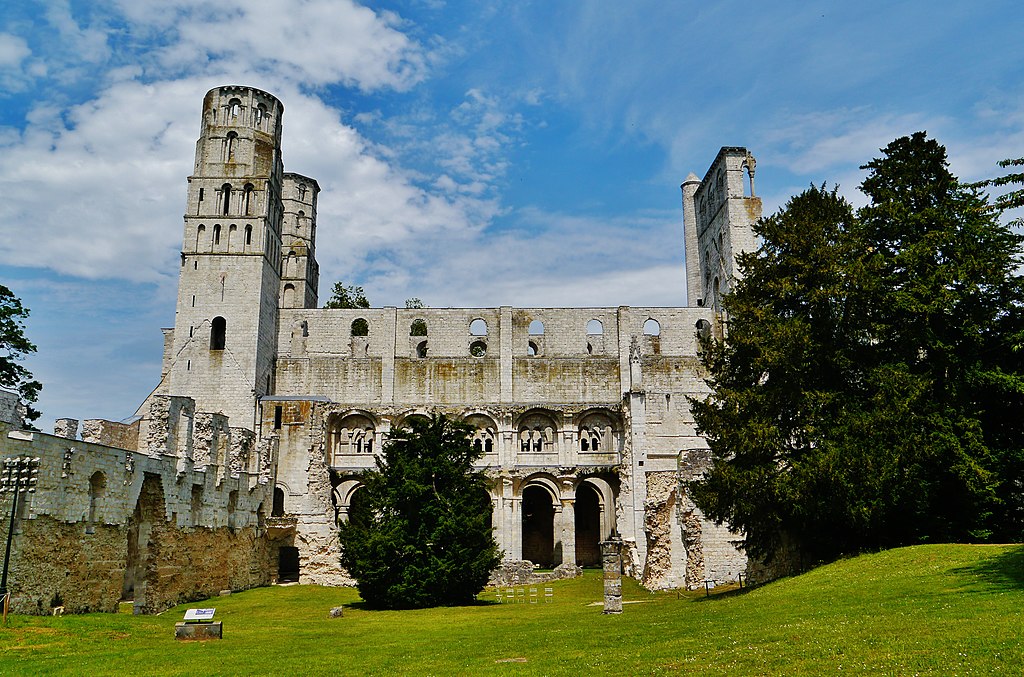
The Abbaye de Jumièges
Zairon, CC BY-SA 4.0 <https://creativecommons.org/licenses/by-sa/4.0>, via Wikimedia Commons
Finally I wanted to include a bonus site due to its proximity to the gite. In Le Plessis Grimoult, one of Lénault's neighbouring villages, there is a ruined priory. Both abbeys and priories are monasteries but priories are smaller and generally subordinate to abbeys. Both will have monks or nuns but a priory is headed by a prior whilst an abbey is headed by an abbot or abbess. The priory in Le Plessis Grimoult was in use until the time of the French Revolution when the church became a quarry. The buildings were badly damaged in 1944 during the battle to secure Mont Pinçon (the nearby highest point in Calvados). Today there are numerous remains including the south tower of the abbey church, the 14th-century Gothic chapter house, the 13th-century gatehouse and the foundations of a rare fortified garden from the 13th century, thought to be the only one in France.
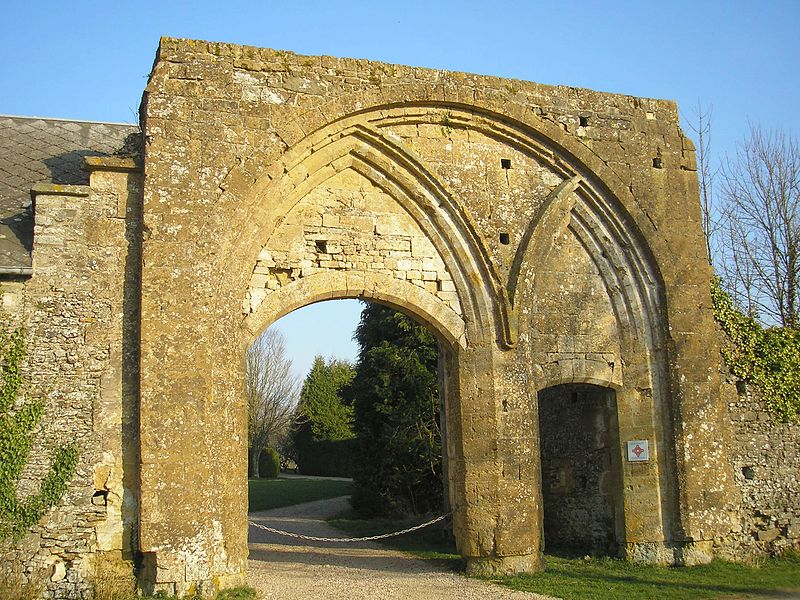
Gatehouse entrance to the Priory at Le Plessis Grimoult
Image credit - Ikmo-ned, CC BY-SA 3.0 <https://creativecommons.org/licenses/by-sa/3.0>, via Wikimedia Commons
As I said at the start, there are a lot of abbeys in Normandy and this is just a selection of the best which are also (with the exception of Jumièges) close to the gite. For more information about other Normandy gites there is a dedicated website you can visit: Abbayes de Normandie (in French and English) although annoyingly the map is far from ideal.
Are abbeys the sort of places you head to when on holiday?
You can pin me for later ...
